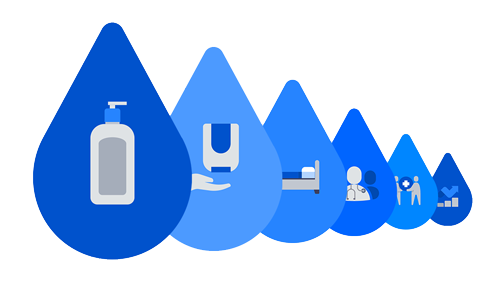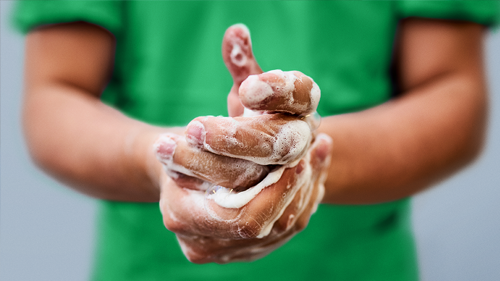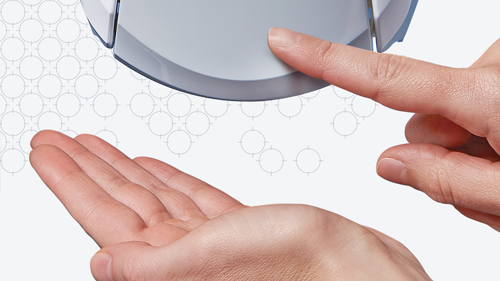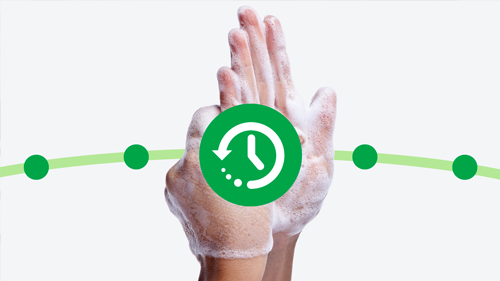Proper hand hygiene and good skin health: How moisturizing helps
Contact dermatitis and microbial shedding can result when skin is too dry.
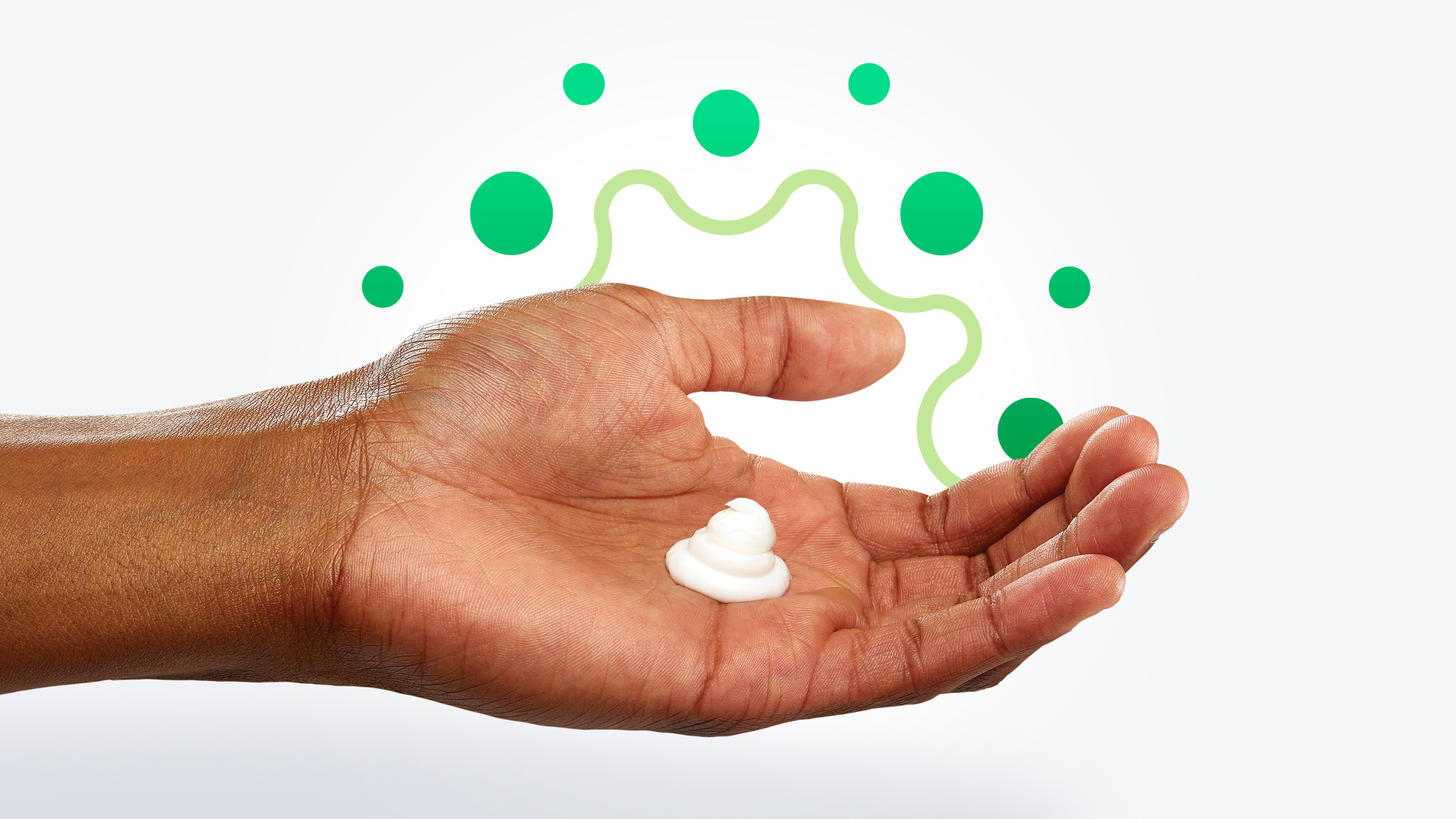
Moisturizing is essential to good hand hygiene and skin health, and must be included in every healthcare facility’s infection prevention and control strategy. Why?
Because especially in today’s pandemic environment, frequent handwashing and sanitizing can lead to chronic contact dermatitis among healthcare workers, no matter how mild the soaps and sanitizers they use are. Contact dermatitis is extremely common among nurses, ranging from 25 percent to 55 percent in prevalence surveys. In fact, as many as 85 percent of respondents say they have a history of skin problems.1,2
Hand hygiene products, along with household detergents and cleaners, can damage the skin by weakening the stratum corneum—cells that contain a dense network of keratin, a protein that helps keep skin hydrated. These products also cause changes in intercellular lipids, which are fatty and form a barrier to protect the skin.3
Frequent handwashing can deplete surface lipids, especially during dry seasons or among those who already have typically dry skin.4 When this natural barrier of the skin breaks down, drying and cracks in the skin can occur, allowing an entry point for bacteria and increasing risk of infection.
Dryness and cracks in the skin allow an entry point for bacteria and increase risk of infection.
Applying a moisturizer can prevent these effects, as well as itching, redness, flaking and pain that can happen when skin breaks down. It also helps prevent chronic damage and changes in the normal skin flora.4
Using a moisturizer promotes and maintains healthy skin, reduces transepidermal water loss (the amount of water that evaporates through the skin), increases skin hydration and improves overall skin tolerance. Also, moisturizing hands with the right product reduces microbial shedding from the skin, protecting people from picking up viruses and minimizing the likelihood of transmission.5
By “moisturizer,” we mean lotions and creams, which according to the Centers for Disease Control and Prevention (CDC), can prevent and reduce skin dryness that results from cleaning hands. The CDC recommends healthcare workers only use hand lotions that don’t interfere with hand-sanitizing products and thus are approved by their facility.6
Selecting a product that is non-sensitizing, non-irritating and compatible with gloves, sanitizers and chlorhexidine gluconate (CHG)-based products is essential. It should be rich in emollients and free of alcohol, artificial fragrances and dyes.
In using moisturizers, healthcare workers should:
- Only use moisturizers provided by the facility to ensure glove and CHG compatibility
- Only use personal products after a shift ends and at home—never during the workday
- Use moisturizers at the start of a shift—after washing hands with soap and water and drying them thoroughly
- Use moisturizers after washing and drying hands throughout the day to keep skin well hydrated
- Use moisturizers at the end of the shift—again after washing and drying hands
Since COVID, there’s been a dramatic increase in clinician hand hygiene. It’s more important than ever to protect the skin’s natural barrier. Cracks and fissures can allow easy access to microorganisms. Clinicians should be applying a moisturizer routinely during the day after washing their hands with soap and water to prevent the risk of infection, discomfort and potentially chronic skin issues.7

VP Patient Safety Innovation for Medline Industries, LP
Paul invented the first electronic hand hygiene monitoring system designed to improve hand hygiene performance while reducing infections and costs. He is an innovative and mission-driven leader with more than 35 years of experience in hand hygiene and patient safety solutions. Paul also shared hand hygiene insights as a past contributor to Healthcare Hygiene Magazine.
Disclosure: Medline was a 2021 member of the Leapfrog Partners Advisory Committee and has a collaborative relationship with a company that offers electronic hand hygiene monitoring services.
References:
- Larson E, et al. Prevalence and correlates of skin damage on the hands of nurses. Heart & Lung. 1997;26:404-412.
- Lampel HP, et al. Prevalence of hand dermatitis in inpatient nurses at a U.S. hospital. Dermatitis. 2007;18:140-142.
- Skin Reactions Related to Hand Hygiene. WHO Guidelines on Hand Hygiene in Health Care: First Global Patient Safety Challenge Clean Care Is Safer Care., U.S. National Library of Medicine, Jan. 1,1970, www.ncbi.nlm.nih.gov/books/NBK144008/.
- Diamond F and Popescu S. Hand Hygiene and Infection Control: Skin Care Supports Patient Care. Infection Control Today. May 19, 2008. www.infectioncontroltoday.com/hand-hygiene/hand-hygiene-and-infection-control-skin-care-supports-patient-care.
- Gale R. Don’t Just Wash Your Hands to Prevent Coronavirus. Moisturize Them, Too. The Washington Post. March 6, 2020, www.washingtonpost.com/lifestyle/wellness/hand-washing-coronavirus-moisturizer-dry/2020/03/06/ede43874-5fcb-11ea-b014-4fafa866bb81_story.html.
- https://www.cdc.gov/handhygiene/providers/index.html
- Gajanan M. COVID-19: How to Avoid Dry Skin After Washing Your Hands. Time. March 11, 2020, time.com/5800275/covid-19-wash-hands-dry-skin-tips/.
